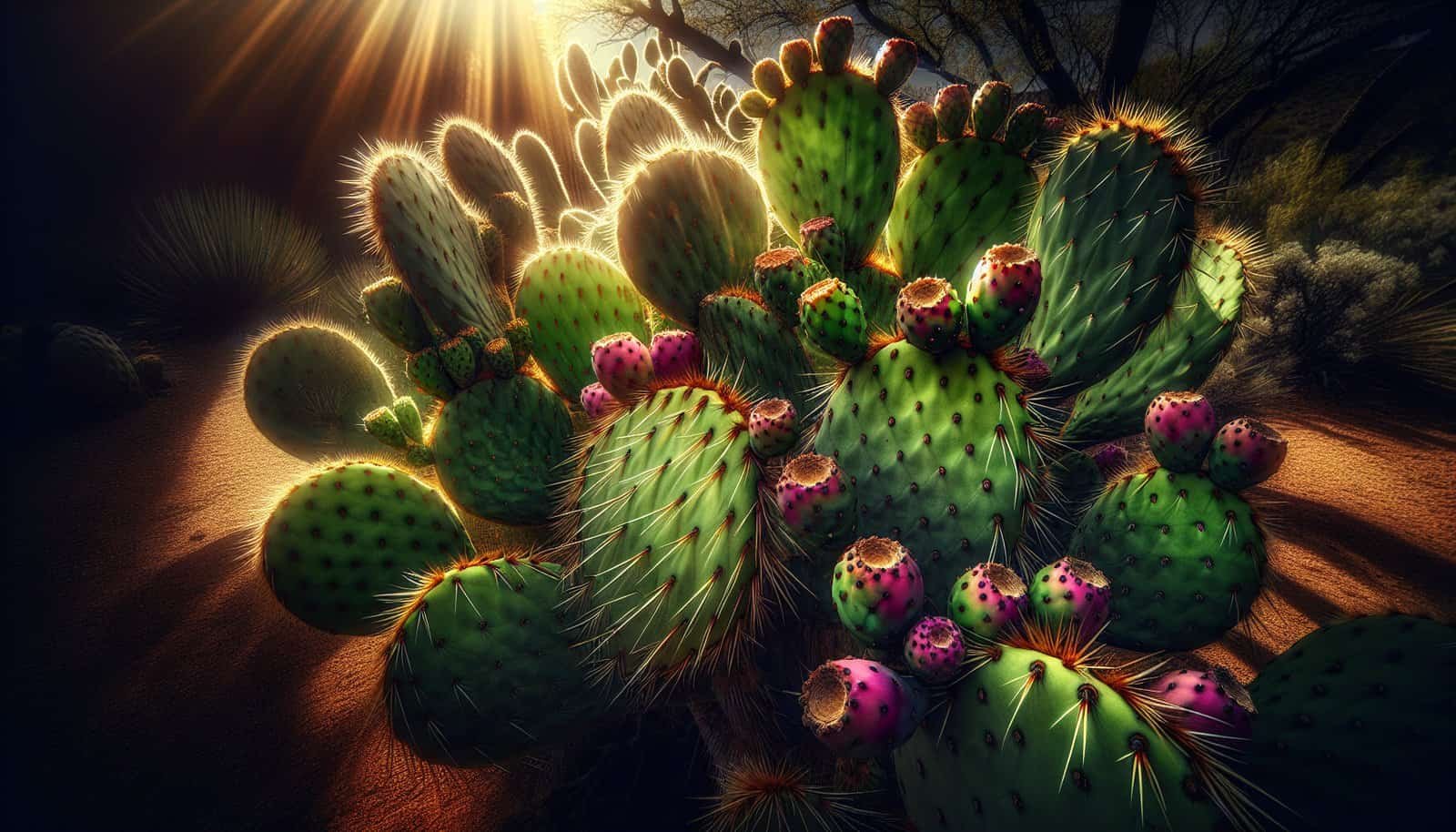Have you ever wondered how you can keep nopal cactus fresh and tasty for an extended period? If you’re a culinary explorer, a health enthusiast, or living in a region where nopal cactus flourishes, taking the time to understand the best ways to preserve this prickly wonder can be truly rewarding. Nopal cactus, also known as prickly pear, is not just a unique plant with its distinct appearance; it’s packed with nutritional benefits and is a common ingredient in many dishes. Preserving nopal cactus allows you to enjoy its many benefits throughout the year.
Understanding the Nopal Cactus
Before jumping into preservation techniques, it’s essential to understand what makes the nopal cactus unique. Native to Mexico, the nopal cactus is an edible cactus pad that has been part of Mexican cuisine for centuries. It’s commonly used in salads, soups, and as a side dish. Rich in vitamins, fiber, and antioxidants, incorporating nopal into your diet can be beneficial for your health.
Nutritional Benefits
Nopal cactus is not just a culinary delight; it’s also a powerhouse of nutrients. It’s rich in vitamin C, vitamin A, and various B vitamins. Moreover, it contains fiber, which is excellent for digestion, and it is low in calories, making it a great food weight management option. The antioxidants present in nopal help in reducing inflammation and lowering oxidative stress.
Culinary Uses
The versatility of nopal can be seen in how it’s prepared. It can be grilled, boiled, or even eaten raw. Its slightly tart flavor adds a unique twist to dishes, complementing other ingredients beautifully. Traditional dishes like nopalitos (sliced nopal) and ensalada de nopal (nopal salad) are not only delicious but are also an excellent way to experience the authentic taste of nopal.
Preparing Nopal for Preservation
Before you can preserve nopal, proper preparation is crucial. Preparing nopal involves cleaning and cutting the pads to ensure they are ready for whatever preservation method you choose.
Cleaning the Nopal
Cactus pads come with tiny spines and glochids that need careful removal. Start by holding the pads with tongs or wearing gloves to avoid pricking yourself. Using a sharp knife, carefully shave off the spines and edges until the pad is smooth. Wash the cleaned pads under running water to remove any remaining debris or spines.
Cutting the Nopal
Once cleaned, the nopal can be cut into strips, cubes, or left whole depending on your preference and the method of preservation. For salads or stews, slicing them into thin strips works best. If you’re planning to preserve them in another form, adjusting the shape beforehand can save time later.

Best Ways to Preserve Nopal Cactus
When it comes to preservation, there are several methods you can use, each with its benefits. The goal is to maintain the taste, texture, and nutritional value of nopal for an extended period.
Refrigeration
Refrigeration is the simplest method and is ideal if you plan to use the nopal within a few days. After cleaning and cutting, place the nopal in an airtight container or wrap them with cling film. Store them in the fridge for up to a week. This method retains the crispness and freshness, making it convenient for quick meals.
Freezing
Freezing nopal can extend its lifespan significantly. To freeze, blanch the nopal by boiling the slices in water for about two minutes, then immediately submerge them in ice water to halt the cooking process. Drain and dry the pieces on a paper towel. Spread the nopal slices on a baking sheet and pre-freeze them for about an hour to prevent them from sticking together. Once frozen, transfer them to a freezer bag, ensuring to remove as much air as possible before sealing. When properly stored, frozen nopal can last up to 12 months.
Pickling
Pickling is an excellent method for those who enjoy a tangy taste. In a saucepan, combine vinegar, water, salt, and your choice of spices such as garlic, oregano, or chilies. Bring it to a boil, then let it cool. Place your nopal pieces in sterilized jars and pour the brine over them, ensuring the nopal is fully submerged. Seal the jars and store them in the refrigerator. Pickled nopal can last several months and adds a zingy twist to salads and tacos.
Canning
Canning is perfect for long-term storage and requires more preparation compared to other methods. Sterilize your canning jars and lids before use. Follow the same blanching technique as freezing, then pack the nopal into the jars, leaving space from the rim for expansion. Pour hot brine or water over the nopal, then seal the jars using a water bath canner. Properly canned nopal can last up to a year or more.
Dehydrating
For a crunchy snack or to use as an ingredient later on, dehydrating is an effective method. Slice the nopal into thin, consistent pieces and arrange them on the trays of your dehydrator. Set the dehydrator at 135°F (approximately 57°C) and dry them for about 8-12 hours or until they are completely brittle. Once dehydrated, store them in an airtight container in a cool, dry place. They can last for several months when stored correctly.
Storing Preserved Nopal
The longevity of preserved nopal greatly depends on how you store them. Each preservation method has its storage requirements to ensure that the nopal remains safe and delicious.
Airtight Containers
For refrigeration and freezing, using airtight containers or high-quality ziplock bags is crucial. The airtight environment minimizes exposure to air and moisture, preventing spoilage and freezer burn. Make sure that the containers are clean and dry before storing nopal.
Cool, Dark Place
For canned and pickled nopal, a cool, dark place like a pantry or cellar is ideal. This environment helps prevent exposure to sunlight and heat, which could degrade the quality and nutritional value of the preserved nopal.
Regular Checks
It’s a good habit to regularly check your preserved nopal for any signs of spoilage. For frozen items, check for freezer burn, while pickled and canned nopal should be free from mold and unpleasant odors. Dehydrated nopal needs to remain crisp; any signs of moisture can lead to spoilage quickly.

Creative Ways to Use Preserved Nopal
Now that you have your nopal preserved, how can you incorporate it into your meals? There are numerous delightful ways to use preserved nopal, making every meal exciting.
Salsas and Dips
Chopped preserved nopal can make a fantastic addition to salsas and dips. Whether you use pickled or refrigerated nopal, it adds a unique texture and taste. Blend it with tomatoes, onions, cilantro, and lime juice for a refreshing dip perfect for chips or as a topping.
Soups and Stews
Preserved nopal, particularly canned or frozen, is ideal for use in hearty soups and stews. The flavor it imparts blends effortlessly with beans, vegetables, and proteins, adding both taste and nutrition.
Tacos and Wraps
Add pickled nopal to your tacos or wraps for an extra punch of flavor. Its tangy taste complements meats, cheese, and vegetables, making every bite delightful.
Snacks
Dehydrated nopal makes for an excellent snack on its own. You can also crumble it over salads or into smoothies as a crunchy, nutritious topping.
Benefits of Preserving Nopal Cactus
Understanding the benefits of preserving nopal cactus can motivate you to get started. It’s not just about keeping the cactus fresh — preservation comes with additional advantages.
Reducing Food Waste
By preserving nopal, you’re actively participating in reducing food waste. Every preserved cactus pad is a step towards sustainability, ensuring that none of this nutritious plant goes to waste.
Cost-Effective
Preserving nopal at home can save you money in the long run. Buying nopal in bulk or when it’s in season usually costs less, and preserving it allows you to have access without regular purchases.
Access to Nutrients
Preserved nopal provides access to its health benefits year-round. Regardless of the season, you can enjoy nutritious meals filled with the vitamins and fiber nopal offers.
Convenience
Imagine always having a portion of this nutritious plant readily available whenever you need it. Whether you’re making a quick salad or a complex stew, having preserved nopal on hand makes meal prep more convenient.

Potential Challenges and Solutions
Preserving nopal cactus can come with its set of challenges. However, with some understanding and solutions, these challenges are manageable.
Sticky Texture
Nopal naturally releases a sticky substance when cut, which might be off-putting for some. To manage this, ensure thorough rinsing and blanching, which can help reduce the stickiness.
Spoilage
Improper storage or preservation technique leads to spoilage. Following exact preservation methods and regular checks ensure that your nopal remains fresh and safe to eat.
Flavor Changes
Different preservation methods can slightly alter the taste of the nopal. It’s ideal to choose methods based on how you intend to use it later, as this can help in maintaining the desired flavor profile.
Conclusion
With a little effort and some simple tools, preserving nopal cactus can become a gratifying undertaking. Whether you opt for freezing, canning, pickling, or dehydrating, each method offers an opportunity to enjoy nopal’s unique taste and health benefits year-round. By understanding each preservation technique’s nuances, you are well on your way to a sustainable and delicious lifestyle with nopal cactus. Now, perhaps you can begin to look at this plant differently, appreciating not just its nutritional value but also its versatility and ease of preservation.


